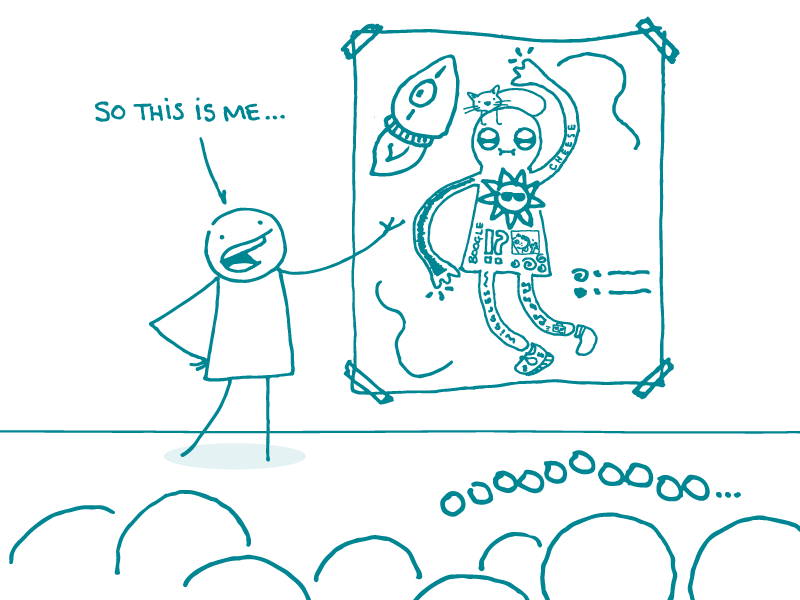
What comes to mind when you hear the phrase “body mapping”? Do you picture an anatomical diagram — or perhaps a full-body tattoo? If so, you’re not too far off, dear readers.
Body mapping is a qualitative research method in which each participant makes a life-size drawing or painting of their own body. After making an outline, they fill in this “body map” with images, symbols, and words. By the end, they’ve created an image that represents multiple aspects of their embodied experience and their unique view of life.
Jane Solomon pioneered body mapping as an art therapy method while working with HIV-positive people in southern Africa. The technique has since grown into a versatile tool for storytelling, teaching, communication, and research that’s used around the world.
How can body mapping inform public health research? You may want to consider this method if you’re planning a community-based project dealing with health indicators or perceived health risks. It’s a good way to gather data about participants’ personal health journeys — as well as the social, political, and economic influences in their lives.
There are many ways to do body mapping, but Solomon’s guidelines list 3 main elements:
- The body map
- A testimonio, or short first-person narrative
- A key for interpreting the images and words on the body map
We see body mapping as a win-win for participants and researchers. The process empowers individuals to share their stories and encourages them to reflect on their health choices or goals. And if you’re a researcher, it can uncover information you never even knew to ask about.
Plus, since the technique focuses on images instead of words, it’s great for overcoming language barriers or accommodating a range of health literacy skills. Count us in!
The bottom line: Body mapping can lead to rich insights and powerful data about participants’ experiences.
Browse recent posts